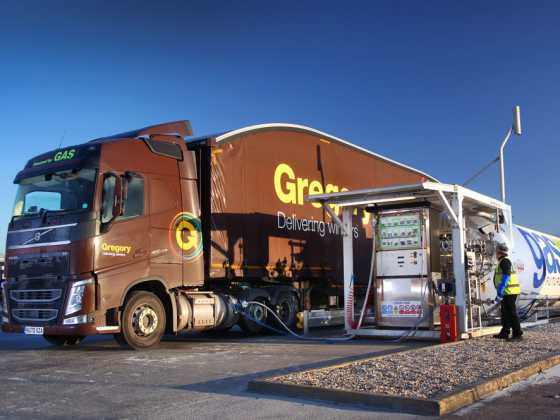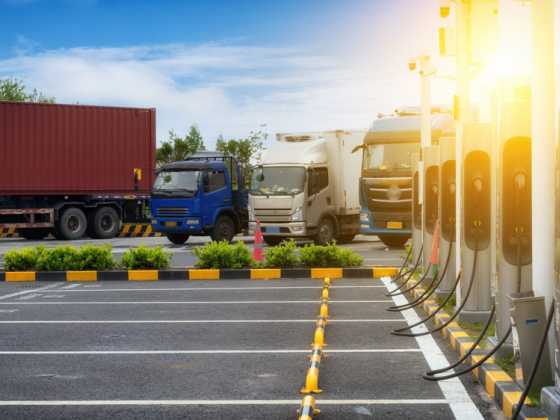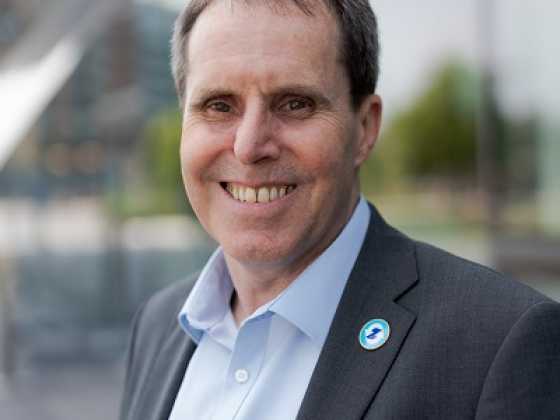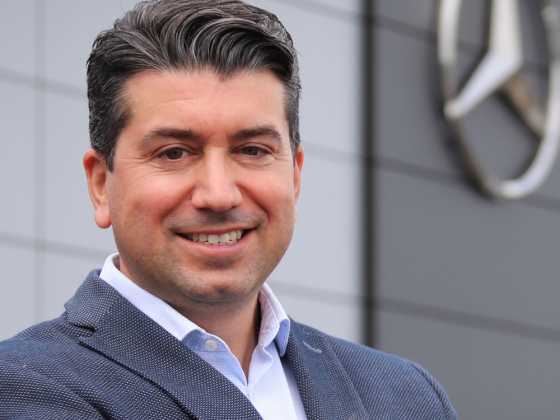Expert Panel: The Switch to Electric
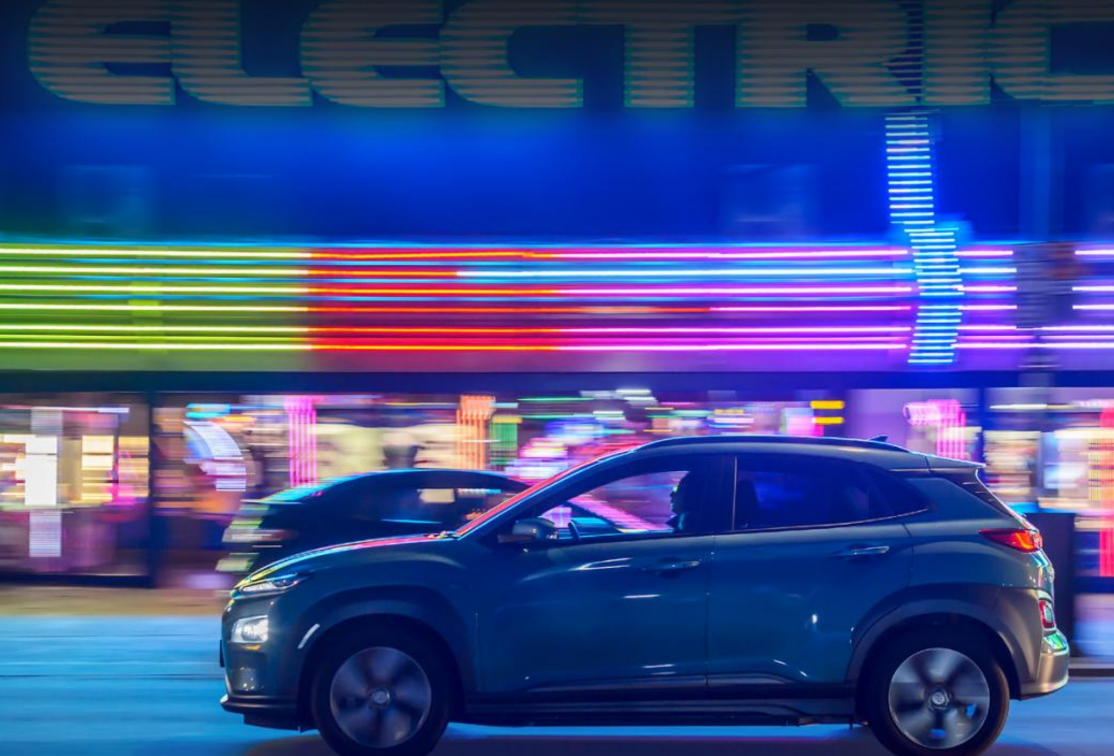
Our expert panelists Lee Brown, Tom Callow and Colin Ferguson discuss the key considerations for fleets looking to switch to electric vehicles, and how they address any perceived barriers
The government has cemented its plans to bring forward the phase out date for the sale of new petrol and diesel cars and vans to 2030, and has concluded in its consultation response that between 2030 and 2035, new cars and vans can be sold if they if they have “significant zero emission capability”, which would include some plug-in and full hybrids. But the “significant zero emission capability” will be defined through consultation later this year.
Given the uncertainty for plug-in hybrids, and knowing the government’s ultimate goal of aiming for zero emission transport, should fleets still be considering plug-in hybrid electric vehicles (PHEVs) or should they switch straight to battery electric vehicles?
One of the reasons the government is looking to include plug-in hybrids in the ban, albeit at a later date, is because there is no way to police that they are being used how they should be – in zero emission mode for the majority of journeys.
Lee Brown, head of 0Zone at the Grosvenor Group explains some of the concerns surrounding PHEVs: “Plug in electric hybrids have come under the spotlight due to tests that show they are delivering higher fuel costs than expected. It’s also widely recognised that drivers aren’t charging the batteries, which means they’re enjoying the BIK benefit of an ultra-low emission car but using it like a traditional ICE car.
“Companies that have added these vehicles to their policies as part of their strategy to drive down emissions aren’t therefore getting the full benefit, creating a bit of a false economy and making budgeting more difficult as the true whole life costs are influenced more by the driver than other vehicles.
“Our 0Zone team, which has never been busier developing ultra low emission car choice lists, would therefore encourage companies to simply move straight to fully electric cars, because when you’re developing future proof car policies it feels like PHEVs could be quite a short-lived phenomena.
“However, if a company is keen to have PHEVs on its fleet, we wouldn’t advise them for drivers covering more than 10,000-12,000 miles per annum, nor would we recommend offering them with a fully expensed fuel card. If drivers are incentivised to use them properly by charging them, then the benefits are good.”
Before considering between EVs or PHEVs, fleets should take the time to consider the needs of their drivers and duty cycles, recommends Tom Callow, head of insight & external affairs at bp pulse. He explains: “While there are huge advantages to pure electric vehicles (BEVs) for many drivers and for many applications, they may not suit 100 per cent of fleet requirements or 100 per cent of drivers today, so other technologies may need to be deployed in the interim. One common misconception has been that BEVs do not work for higher mileage drivers, but in this respect it’s more important to look at trips than mileage. For example, a driver regularly travelling more than 400 miles per day and 20,000 miles per year may find transitioning to certain BEVs more challenging today, whereas a driver doing 30,000 miles per year, but typically driving less than 100 miles per day may find it far easier.”
Colin Ferguson, co-founder and CEO of The Algorithm People believes that plug-in hybrids still have a key role to play this decade, particularly in terms of getting businesses and their employees more familiar with EV technology. Colin also points out that there are other ways to cut emissions without having to invest in new vehicles. He explains: “Route optimisation platforms such as My Transport Planner are proven to cut total fleet mileage by up to 20 per cent – and save fleets money. So, we would encourage fleet managers to look at these opportunities as well as at investing in lower emission vehicles.”
Charging considerations
The government’s response to the consultation on ending the sale of petrol and diesel cars and vans highlighted the challenges to achieving the 2030 target.
Some of the respondents who disagreed with bringing the date forward were of the view that the public did not have sufficient confidence in the public charging network or the current technology offer.
Organisations looking to adopt electric vehicles need to give careful consideration to how the vehicles will be charged, whether in the workplace, at home, or using the public charging network. What advice would our panelists give in this area?
Firstly, Lee Brown seeks to reassure fleets: “To some degree there’s a bit of an irrational panic about charging points. If you read the headlines about what’s hindering the uptake of electric vehicles, it’s one of the things that we all seem to worry about enormously.
“The reality is we aren’t seeing loads of electric vehicles stranded on the side of the road, and with the electric vehicle fleet growing dramatically at the Grosvenor Group we are also not noticing any call outs to drivers who have run out of charge and need roadside support.
“So, we have to be pragmatic about it and look at the facts.
“The number of charging points is increasing dramatically across the UK, workplace grants exist to enable companies to fit them in their car parks, and home grants exist for drivers. And if you have a private drive at home it’s easy to have a charger installed. In fact, the Grosvenor Group is able to incorporate the cost of installing a home charger within the lease rental of our contract hire vehicles.”
Where it is less straightforward is where you have electric vehicle drivers with no facility to install a charger at their home. On this point, Lee believes it is still possible to use an electric vehicle: “With relatively simple planning, it really isn’t a huge problem to use the public facilities or the chargers at work to keep your vehicle topped up. And if we feel a driver is in such a remote area that it could be a problem, we would simply advise they wait until their local infrastructure improves.
“Within our 0Zone solution, we look at three key areas of moving to a zero emission fleet; these are the financial, environmental and operational considerations.
“As part of this, we look at the practicalities of drivers having electric vehicles and, at all times, we take a very sensible and transparent approach to allay drivers’ concerns and help our clients move their fleet seamlessly towards EVs.
“What we don’t want is for an irrational concern about EVs and charging points to encourage a driver to commit to another petrol and diesel for three years when it’s not necessary to do so – which is why our 0Zone team is on hand to advise and support,” Lee adds.
Engaged drivers
For Tom Callow, the drivers play an massive role in the ease of transitioning to electric, and it’s not just about whether you have the right infrastructure installed. He explains: “It’s important to see charging as just one part of fleet electrification. For example, a fleet with imperfect charging infrastructure and highly engaged employees may find the transition easier than a fleet with incredible charging infrastructure, but unengaged employees. Fleet electrification isn’t just about electric vehicles and charging, but also about attitudes, behaviours and education.
“In terms of the charging itself, businesses should consider the entire ecosystem, covering home, workplace and on-the-go charging, and what their role is in each segment.
“For example, some fleets are already proactively helping employees to get home chargers installed – sometimes even funding them – not just to deliver a better experience for their drivers, but also to help balance their charging requirements, since more employees relying on charging at work could ultimately be unhelpful. Other businesses are providing their employees with seamless access between public and workplace charging, with drivers able to use the same access method at work as they do when they’re on the road, and all billed through the same account.”
Companies may also be unsure of how to reimburse drivers for the cost of charging at home. Colin Ferguson says: “There are brilliant solutions out there such as Mina Energy, which is one of our partners. Mina takes the hassle out of expenses claims for home charging.”
Colin also urges companies to use data to make sure they get their workplace charging right. He says: “For workplace charging, it is important to take a data-based approach to make sure you have the right level of infrastructure. We work very closely with EV charging experts Elmtronics to ensure companies get this important step right.”
Other benefits
Electric vehicles offer numerous benefits in addition to their environmental credentials and savings on fuel costs. Driver satisfaction tends to be higher, with a Zap-Map survey showing that EV drivers reported a satisfaction score of 91 out of 100, compared with only 72 for petrol or diesel vehicle owners.
Clean air zones, which are starting to become a familiar sight, allow zero emission vehicles to enter, and so electric vehicle drivers can avoid paying penalty fees.
What’s more, drivers working at night can benefit from the near silent operation of electric vehicles.
“There is a raft of benefits over and above saving fuel and cutting emissions,” comments Colin Ferguson. “The driver experience is more pleasant, and there are significant business in kind (BIK) tax savings for company car drivers. For fleet operators, the benefits include significantly lower maintenance costs. We work with a lot of courier and logistics companies who also see the near-silent operation of electric vans and trucks as ideal for out of hours deliveries – particularly in urban areas where conventional vehicles are not permitted to make deliveries at night.
“Furthermore, switching to EVs supports wider corporate objectives and is increasingly in line with customer expectations. Consumers and businesses are becoming more selective, in that they are are making purchasing decisions with businesses who have clear sustainability goals and net zero strategies.
“There can also be cost benefits to fleets operating in areas which have congestions charge zones or ULEZ. This can be a substantial additional levy on operators. Investing in EVs should future-proof fleets against these charges.”
Whole life costs
Because the on road costs of plug-in vehicles are higher and can be off-putting, Lee Brown believes that it is very important to recognise the benefits of moving to electric vehicles, in terms of zero emissions, benefit in kind tax savings, and lower maintenance costs. Lee explains: “It’s for this reason why whole life costs are so important when evaluating the financial savings that EVs will deliver. For example, there are still a lot of people that think a £50k Tesla 3 will cost them more over three years than a BMW 320d however, as the Whole Life Costs approach proves, this is not the case.”
Lee continues: “Implementing a Salary Sacrifice scheme to support EV adoption has even wider benefits, and if you haven’t looked into this yet as a company it is well worth doing so. At the Grosvenor Group, we have never been busier advising customers on Salary Sacrifice for ULEVs and EVS as the benefits are so good.”
A positive knock-on effect
The reputational benefits of EVs are also worth highlighting, as are the positive knock on effects the move to zero emission transport can have. Lee comments: “Perhaps what is not talked about so much is the impact EVs can have on a company’s image and brand. At the moment many fleets are interspersed with a selection of electric vehicles - the drivers choosing them still being seen, to some degree, as early adopters of new technology.
“However, if we can move through this process quickly, with companies aiming for a completely electric vehicle fleet, this becomes a really significant statement about their commitment to the environment and a zero emission future.
“This then has a knock-on effect to the company’s culture. By having an all electric fleet means that the focus will quickly shift to other areas of the organisation that are less environmental - the question being asked as to why the car park is full of electric vehicles yet other aspects of the business are creating higher emissions. (eg building/offices, heating systems, production facilities, recycling etc). So, at the Grosvenor Group we ultimately believe that the quick adoption of electric vehicles has far wider-ranging benefits in terms of a long term ‘visible’ cultural shift as businesses move to a carbon neutral position.”
Charging incentives
Tom Callow points out that companies can benefit from the the charging incentives available: “Businesses have benefited for several years now from the 100% first-year allowance (FYA) for expenditure incurred on EV charge points, which is set to run through to March 2023. The new super-deduction of a 130% first-year allowance may deliver even greater benefits to businesses, assuming their particular charge point purchases qualify. Fleet and procurement managers should ensure they consider all of the EV charging incentives available to them and their employees, and not just these capital write-down allowances. For example, employees may be eligible for the Electric Vehicle Homecharge Scheme grant of up to £350, considerably reducing the cost of installing a charging point at their property. Businesses are likely to face significant demands for workplace, but helping employees with off-street parking to charge at home can balance this demand and ensure that they are focusing their workplace charging provision on those who need it most, especially those who cannot charge at home.”
Overcoming concerns
The government’s consultation on banning new ICE vehicles showed that there were four main barriers raised by people in opposition – the readiness of the chargepoint infrastructure market; the readiness of the vehicle manufacturing industry; inadequate battery supply; and the impact on consumers.
We asked our panelists what they have experienced as the biggest concern to adopting electric vehicles, and how they address them.
Tom Callow comments: “The concerns most frequently cited around EV adoption tend to relate to either vehicle cost of charging infrastructure (either a lack of it, or the time it takes to charge). However, in both cases, much of this concern – and in some cases fear – is driven by a lack of education. Education and better awareness of EVs and the associated infrastructure will be key to adoption. For example, while electric vehicles are not yet within the realm of all people’s budgets, they are certainly not the luxury toys as which they’re often labelled. Data from electric car owners shows they are not just driven by the wealthiest in society, and many drivers are already finding EVs cheaper to run from their first month, thanks to lower running costs.
“When it comes to charging infrastructure, there is also a great misperception about how much is already available, and how much it is being used. For example, we typically see around 2,000 or so concurrent charging sessions on our network at peak times, meaning there is plenty of headroom at any moment, and even the most used charge point on our network is only in use for circa 50 per cent of its available time, so there is plenty of capacity.”
Lee Brown shares his experience on perceived barriers to EV adoption: “Steering clear of the obvious topic, which is range anxiety, we’re finding that another big concern cited by our customers is the choice of electric vehicles available in the UK market and whether that offers them the operational benefits for their drivers to be able to carry out their work.
“It’s very simple if you are a sales representative covering a couple of hundred miles a day with little to carry in the vehicle. In that situation there are choices available, and Tesla is proving to be incredibly popular due to its good charging range, however there isn’t a huge amount of room if you have a lot of equipment or product samples to carry.
“Where it becomes more tricky is when customers have teams of engineers or drivers who are carrying a lot of kit around with them, and whether electric vehicles offer the practicalities required for them to do their job.
“With this in mind, EVs don’t yet give the agility that petrol/diesel has to offer, which means if a company’s drivers are in their cars all day, travelling higher distances, under pressure to do a lot of calls/visits and carrying a lot of equipment its not really feasible yet to offer electric cars. On a positive note, we can see the vehicle manufacturers are making huge strides forwards and producing a much improved range of electric vehicles in the coming years, which will cause these objections to go away relatively quickly.
“Also, to overcome this, our 0Zone team breaks down a customer’s fleet into each vehicle type, its usage, location and mileage so that we can advise on the best approach moving forwards.
“We also developed an innovative ‘Ultra Low Emission Transition Scheme’. This is aimed at drivers who are uncertain whether an EV is right for them and workable within their job role, location and activities. Under this scheme, they are given an EV on a short term lease to get accustomed to the new type of vehicle before choosing their next car. Launched last year, this scheme has been immensely popular.”
The need for support
For fleet managers to confidently switch to electric vehicles, they need the right support, believes Colin Ferguson. He explains: “Increasingly we are talking to fleet and transport managers who have been set goals and targets for EV adoption - but are given no support in how to meet those objectives.
“Our Decarbonisation Road Map is specifically designed to provide the “how”. It is a unique, data-based, evidential approach to identifying which vehicles and routes are the most suitable for electrification. It eliminates the guesswork and enables fleet managers to build a clear business case for how, when and where they will adopt EVs. This analysis can be fed back to senior management teams to help them make more informed decisions on electrification.
“With the recent cuts to the Government grants for electric cars, vans and trucks, it is more important than ever to maximise the use of EVs once you have invested in them. Good route optimisation platforms can manage EVs as part of a wider fleet. For example, My Transport Planner not only ensures that an EV doesn’t exceed its real-world range, but also enables you to sweat the asset, significantly increasing the ROI from EVs.”
Our expert panelists
Colin Ferguson, co-founder and CEO, The Algorithm People
Colin Ferguson is co-founder and CEO of The Algorithm People, which provides a unique, data-based approach to fleet electrification. The company uses advanced algorithms to identify which of a fleet’s vehicles and routes can be switched to EVs. The Algorithm People is also the creator of My Transport Planner, the UK’s first fully pay-as-you-go route optimisation solution.
Lee Brown, head of 0Zone, The Grosvenor Group
Lee Brown is head of 0Zone, the Grosvenor Group’s innovative and market leading solution to help companies navigate their way smoothly towards ultra-low emission and electric vehicles. Lee is also managing director of Interactive Fleet Management, the Grosvenor Group’s specialist fleet management business, which means he brings a perfect balance between how fleets can drive down their emissions and the implications of policy setting. Lee joined the Grosvenor Group in 2001, became finance director of Interactive Fleet Management in 2012 and managing director in 2020, and is well-known for his clear and inciteful advice for companies with car and light commercial vehicle fleets.
Tom Callow, head of insight & external affairs, bp pulse
Tom has worked in the electric vehicle and wider automotive sector for 12 years. He formerly chaired the UK motor industry’s principle EV group and has extensive knowledge of electric vehicles, infrastructure and associated technologies. His role at bp Chargemaster includes engaging with the media, car manufacturers, government and other stakeholders, and helping to develop strategy. He drives around 30,000 pure electric, zero-emission miles per year.

